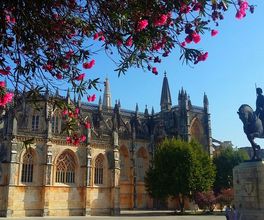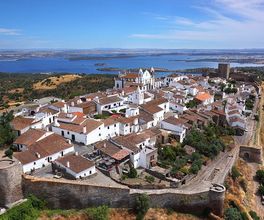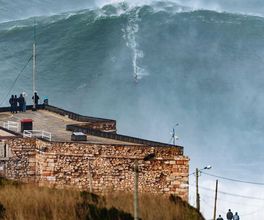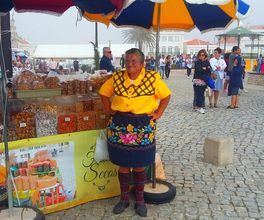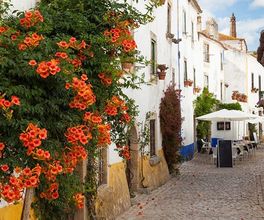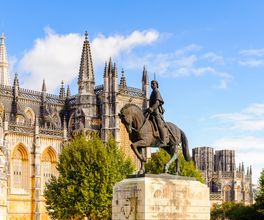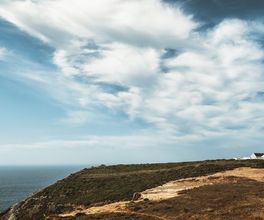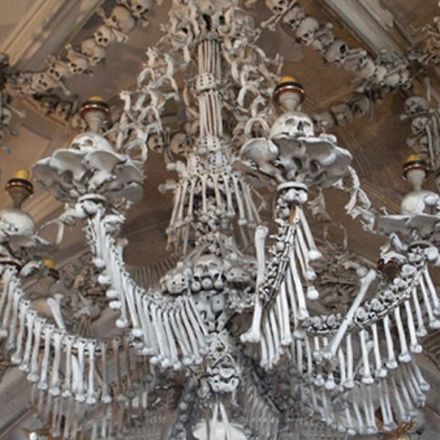
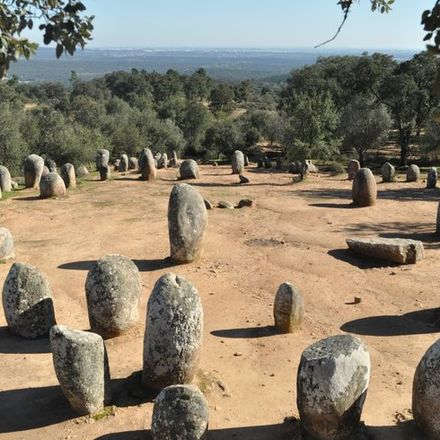



About this experience
You are waiting for a journey full of various impressions. We will immerse ourselves in the distant past of human civilization, feel the aura of mysterious places, which are not so many on the planet, together we will reflect on the mysteries left to us by our predecessors. We will also visit the Middle Ages, learn about the country's history and the influence of religion on the kings of Portugal, on making important decisions in internal and foreign policy. And we will see and hear how Portugal lives in the modern world.
Évora
The city of Évora is located 120 km from Lisbon and is the main city in the Alentejo province. This region is famous for the production of excellent wine, grain, olives, cork oak products, and wool. In 1986, the city of Évora was included in the UNESCO World Heritage List.
The settlement, originally called Ebora, was founded by the Lusitanian tribe, ancestors of modern Portuguese, in the 6th century BC. In the 1st century BC, Ebora became part of the Roman Empire. In 715, it was conquered by the Moors and liberated in 1165 by the Crusaders. The golden period in the city's history is considered to be the 15th-16th centuries when the representatives of the Avis dynasty of Portuguese kings ruled the country.
Currently, there are about 20 churches and monasteries and many attractions here.
Program
- The Temple of Diana, a monument from ancient Roman times, built in the 2nd-3rd centuries, preserving for us 14 Corinthian columns.
- The Cathedral of Évora belonging to the largest and most interesting Gothic buildings in Portugal. The cathedral houses the oldest active organ in Portugal (16th century) and a unique statue of the calm and pregnant Virgin Mary dating back to the 15th century.
- Museum of Sacred Art, located in the southern tower of the Èvora Cathedral. Among the most famous exhibits is a carved ivory triptych of the Madonna and Child from the 13th century, which shows many scenes from the life of Mary, and a tomb lined with 1426 precious stones, including diamonds, sapphires, rubies, and emeralds.
- Gothic church of San Francisco, built in 1510. Adjoining it is the Chapel of Bones, lined inside with the bones and skulls of more than 5,000 monks.
- Palace of King Manuél I in the city garden. It is here that King Manuél I appointed Vasco da Gama as the commander of the Indian fleet.
- "Street of Painted Houses", where fantastic characters were depicted on the walls by order of Vasco da Gama who lived in the city: mermaids, trees, Indian animals.
- Giraldo Square, where in the 15th century holidays and executions were held.
- The building of the Jesuit University of Évora, which opened in 1559 and existed for 200 years until 1759.
- The Aqueduct of the "Silver Water", built between 1531 and 1537, with a length of 18 km.
- In addition to the historical part of the tour, there is also a culinary one. Évora is famous for its cheeses, sweets, the best wines in the country, and dishes, the taste of which you can enjoy in one of the city's restaurants or cafes.
- Next we will visit an amazing place: Almendres Cromlech (15 km from Évora). We will visit a complex dating back to 5000-4000 BC. It consists of a group of menhirs - man-made stone structures, the oldest in the whole of Europe and possessing a mysterious power. Undoubtedly, special rituals were conducted here. The place was chosen not by chance. Many people feel special energies here. Pulse, vision, perceptions of reality change. You will hear explanations from the guide, as well as details of the construction, opinions, and conclusions of scientists about another wonder on the territory of Portugal.
- Lunch in Évora (2:00-3:00 PM)
Organizational Details
Cost of the car traveler tour - 280 euros
- Entrance tickets to the attractions of Èvora are additionally paid: from 3 to 7€

